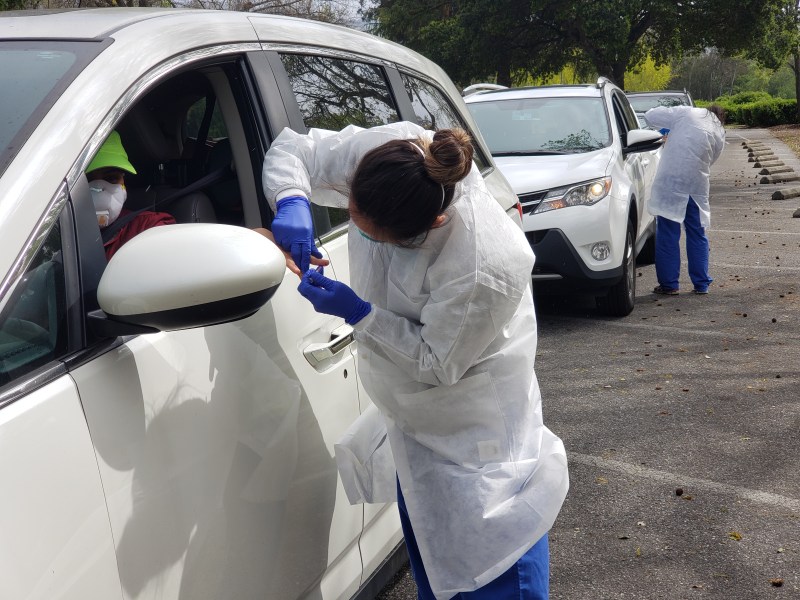A seroprevalence study led by Stanford researchers estimates that the number of COVID-19 cases in Santa Clara County was 50 to 85 times higher than the number of confirmed cases by early April — meaning that the true case numbers could range from 48,000 to 81,000 people infected. The county has reported 1,870 confirmed cases as of Friday.
Medicine professor and study co-lead Jay Bhattacharya said in a Friday press conference that the study results put coronavirus’ fatality rate “about on par with the flu,” but he warned that the lack of a vaccine means the two situations aren’t equivalent.
“It’s still quite a lethal virus,” Bhattacharya said.
The study estimates that between 2.49 and 4.16% of people in the county have been infected, according to study co-lead Eran Bendavid, an associate professor of medicine. Bendavid said Santa Clara County has not reached herd immunity, which Gov. Gavin Newsom said in a press conference on Wednesday would be necessary for the state to return to normal.
“A large portion of the population remains unexposed,” he said. “We’re not there yet.”
The researchers tested blood samples from 3,330 people for antibodies in early April, using a commercially available test supplied by Premier Biotech. Antibody tests look for IgM and IgG antibodies that indicate that a person either has coronavirus or had it and recovered. Nasal swab tests, on the other hand, determine whether live coronavirus is present in the body.
Out of the 3,330 samples analyzed, 50 came back positive, indicating a crude prevalence rate of 1.5%. The researchers adjusted the initial results both by demographics — to account for the zip code, sex and race of study participants — and by test accuracy. The antibody test misses between 10 and 30% of those who have COVID-19 antibodies, according to Bendavid.
“This test is not good enough for personal and clinical decision making,” Bendavid said. “But for estimating the prevalence, the inaccuracy is something we can account for.”
Bhattacharya said similar studies would need to be conducted across the country to get a better sense of the virus’ prevalence.
“It is absolutely critical that similar studies be done all around the country,” he said. “Understanding the prevalence of the virus in each region is a critical step forward to making policy.”
A sister study was conducted in Los Angeles last week in collaboration with researchers at the University of Southern California, and the Stanford team is working on a study of Major League Baseball players, according to Bendavid.
